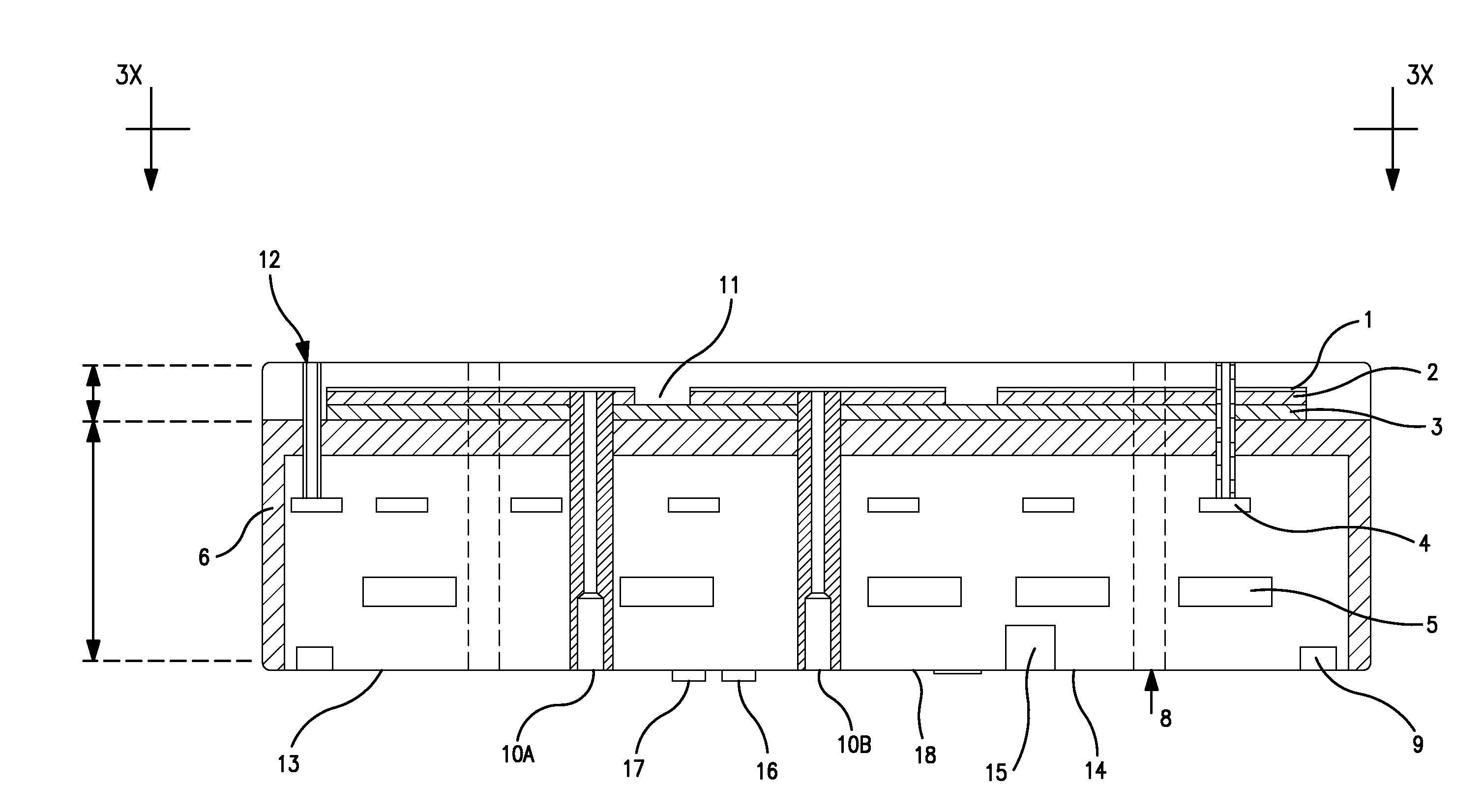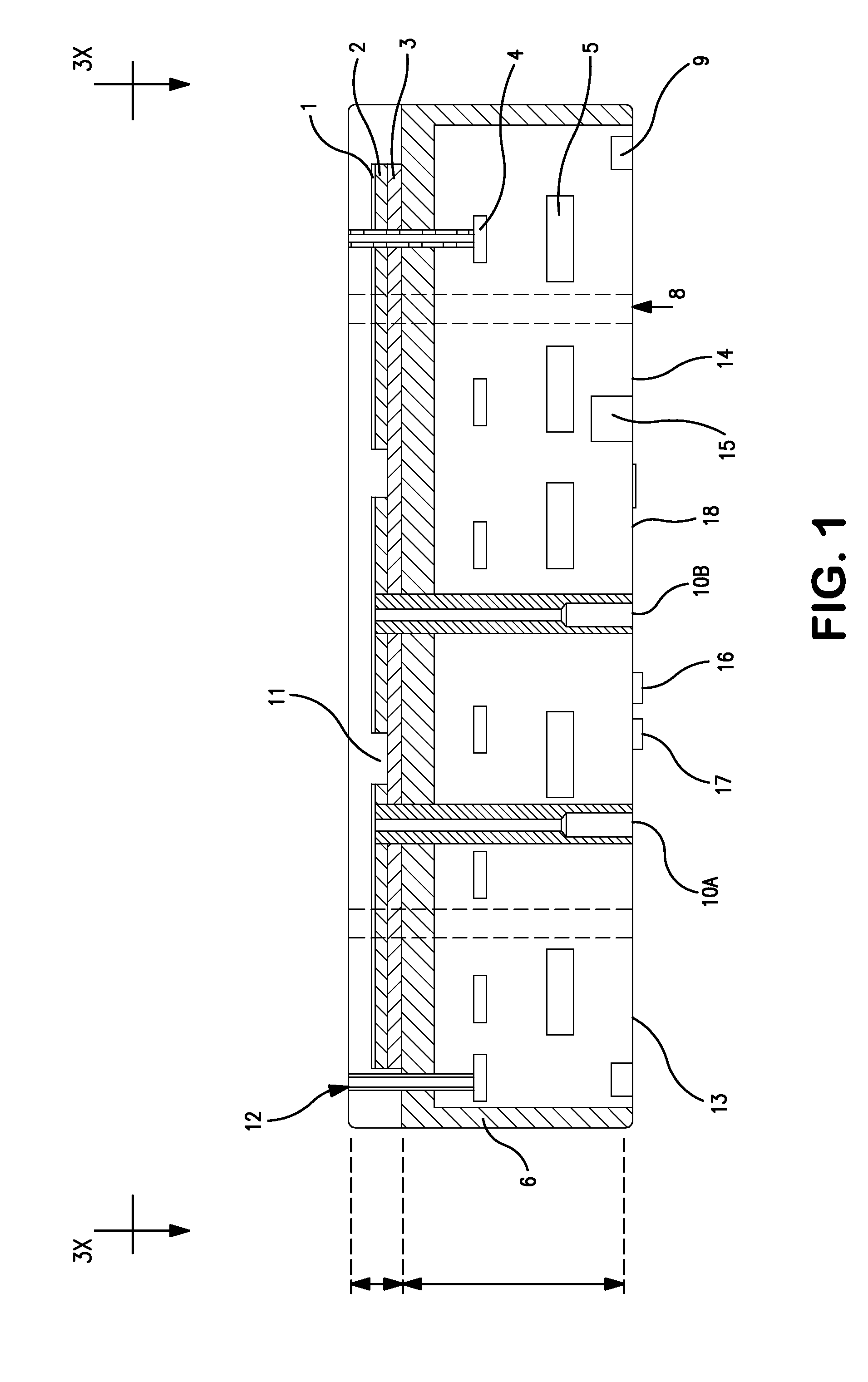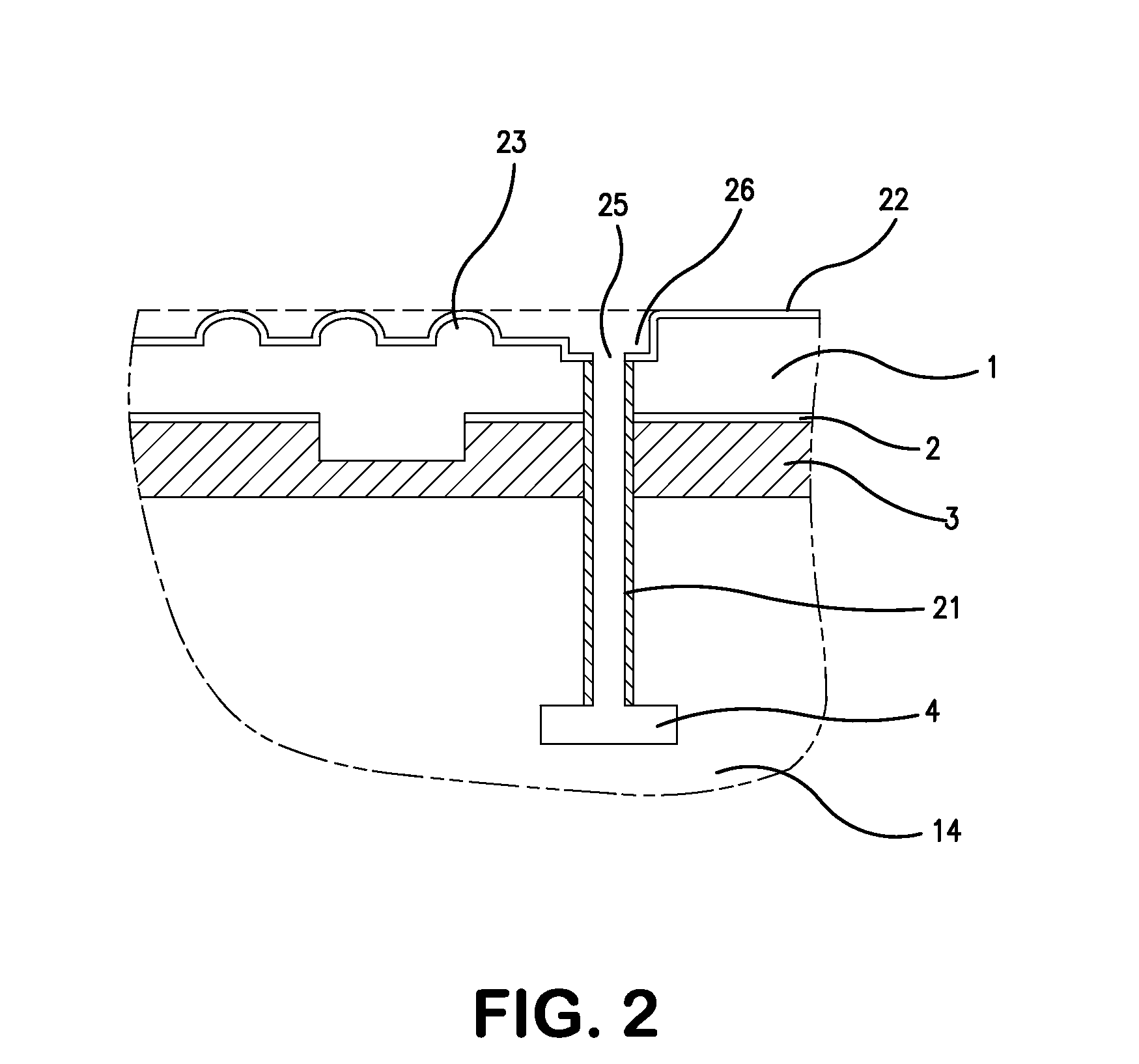Polyceramic e-chuck
a polyceramic, e-chuck technology, applied in the direction of electrostatic holding devices, manufacturing tools, mechanical apparatuses, etc., can solve the problems of inpracticality of charging and discharging periods, inability to charge and discharge, and inability to use precision, so as to improve the control of the capacitance budget, reduce thermal stresses, and reduce capacitance
- Summary
- Abstract
- Description
- Claims
- Application Information
AI Technical Summary
Benefits of technology
Problems solved by technology
Method used
Image
Examples
example 1
[0026]In one preferred method of the present invention, the top layer is made from a ceramic aluminum oxide that is at least about 99.5% in purity, with a dielectric constant of from about 8.5 to about 9.5, a resistivity of 1E12 ohm.m. and a breakdown voltage of 22 KV / mm. An electrode comprises tungsten (W) with a resistivity of about 0.06 micro-ohm-m. The preferred electrode can be a single pole, or the electrode is segmented to create poles that are preferably even in number and have equal area and hence equal capacitance. A bottom dielectric is made of a polyceramic layer with a dielectric constant of 3.5, a resistivity of about 1E15 ohm.m and a breakdown voltage of 300 KV / mm. The polyceramic was made of a siloxane compound filled with aluminum oxide. Such an assembly was manufactured and tested on a heat sink made of 6061 T6 aluminum. A 300 mm Si wafer was clamped in a vacuum chamber. Aluminum oxide thermal sprayed layer was used on the exposed surfaces of the heat sink to preve...
example 2
[0027]In another preferred assembly method a ceramic aluminum oxide about (99.5%) was used as the top dielectric with a dielectric constant of greater than about 8, a resistivity of 1E15 ohm.m and a breakdown voltage of about 22 KV / mm. An electrode was made from tungsten (W) with a resistivity of 0.06 micro-ohm-m. The bottom dielectric was made of polyimid having a dielectric constant of 3.5, a resistivity of 1E16 ohm.m and a breakdown voltage of 300 KV / mm. Such an assembly was manufactured and tested on a heat sink made of 6061 T6 aluminum. A 300 mm Si wafer was clamped in a vacuum chamber.
[0028]In further examples, a chuck was made with the same structure as defined above, where the polymeric filler was boron nitride. In yet further examples, a chuck was made with the same structure as defined above, where the polymeric filler was aluminum nitride.
[0029]In still further examples, a chuck was made with a top dielectric made of silicate glass with a dielectric constant of 6.5, with ...
PUM
 Login to View More
Login to View More Abstract
Description
Claims
Application Information
 Login to View More
Login to View More - R&D
- Intellectual Property
- Life Sciences
- Materials
- Tech Scout
- Unparalleled Data Quality
- Higher Quality Content
- 60% Fewer Hallucinations
Browse by: Latest US Patents, China's latest patents, Technical Efficacy Thesaurus, Application Domain, Technology Topic, Popular Technical Reports.
© 2025 PatSnap. All rights reserved.Legal|Privacy policy|Modern Slavery Act Transparency Statement|Sitemap|About US| Contact US: help@patsnap.com



